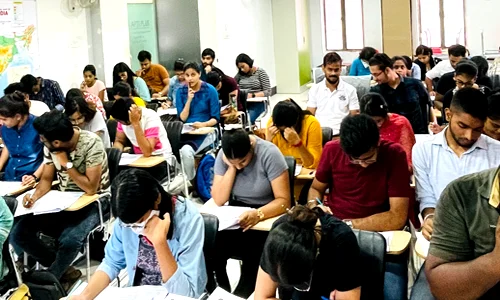



The Government of India proposes a special cess on goods like pan masala to create a non-lapsable fund for health and national security, linking public health with national stability. Critics warn it weakens fiscal federalism and risks poor fund use amid past evidence of unspent cess.
Click to View MoreDGCA struggles to balance passenger safety with fast aviation growth, exposed by disruptions over new fatigue rules. While reforms like eGCA improved global safety rankings, staff shortages and limited autonomy persist. Converting DGCA into an autonomous Civil Aviation Authority is essential for managing India’s aviation boom safely.
Click to View MoreSurveillance apps are backfiring in welfare delivery. Tools like NMMS, Aadhaar authentication, and Poshan Tracker exclude beneficiaries, burden frontline workers, and threaten privacy. Effective governance needs stronger social audits, human oversight, and a culture of responsibility instead of techno-solutionism.
Click to View MoreWhat is Alaknanda Galaxy?
Indian astronomers from the National Centre for Radio Astrophysics (NCRA-TIFR), Pune, have discovered a spiral galaxy named 'Alaknanda'.
Click to View MoreThe Jal Jeevan Mission provides rural households with safe tap water, focusing on source sustainability, quality, and community management. While progressing, it faces challenges including O&M, water quality, and ensuring the long-term functionality of connections.
Click to View MoreThe Supreme Court ordered a nationwide CBI probe into the ₹3,000 crore “digital arrest” scams targeting seniors. It allowed investigation without state consent, directed action against fraudsters and mule-account bankers, and pushed coordination with Interpol and AI-based tracking, tightening accountability for telecom and online intermediaries.
Click to View MoreSanchar Saathi boosts telecom security through tools like CEIR and TAFCOP, blocking stolen devices and fraudulent SIMs. But the mandate to pre-install a non-removable app on smartphones has raised privacy concerns. Moving ahead requires balancing security with strong data protection, transparency, public trust, and industry cooperation.
Click to View MoreBioterrorism remains a major security risk, worsened by the BWC’s lack of verification. India’s dense population, climate, and open borders heighten vulnerability. Despite existing frameworks, rapid biotech advances outpace oversight. India needs a National Biosecurity Act, stronger One Health systems, and active advocacy for global BWC reforms.
Click to View MoreIndia faces a stark choice: secure digital sovereignty or slip into a subtle digital raj. As data becomes strategic capital, surrendering regulatory space will choke innovation. By strengthening DPI, pursuing digital industrialisation, and guarding data control, India can ensure self-reliance and unlock trillion-dollar growth for the future.
Click to View MoreCyclone Senyar, the first November cyclone to hit Indonesia, made landfall on Sumatra on November 26, 2025. Formed unusually in the Malacca Strait, it rapidly intensified to 70–90 km/h, highlighting the growing impact of climate change and warming seas on rare regional cyclogenesis.
Click to View MoreThe sub-plinian eruption of Ethiopia’s Hayli Gubbi volcano sent a stratospheric ash plume toward India via subtropical jets, threatening aviation and engines. Its sulphur dioxide release may cause brief global cooling. The event highlights the need for stronger international monitoring and exposes aviation and ecosystem vulnerabilities.
Click to View MoreThe Mekedatu dam dispute highlights Karnataka’s push for drinking water and hydropower versus Tamil Nadu’s fears of reduced flow and legal violations. Environmental concerns in the Cauvery Wildlife Sanctuary add pressure. With the Supreme Court involving the CWMA, resolution depends on cooperative federalism and sustainable urban water options.
Click to View More
© 2025 iasgyan. All right reserved